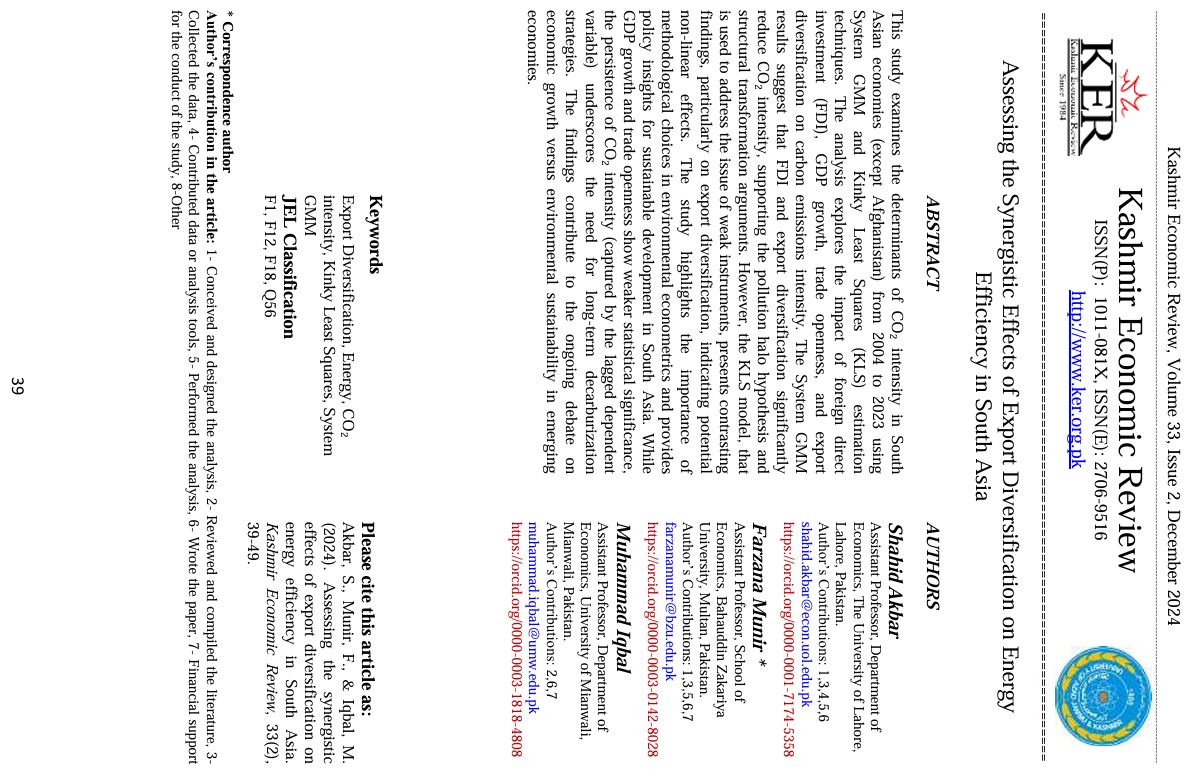Assessing the Synergistic Effects of Export Diversification on Energy Efficiency in South Asia
Main Article Content
Abstract
This study examines the determinants of CO2 intensity in South
Asian economies (except Afghanistan) from 2004 to 2023 using
System GMM and Kinky Least Squares (KLS) estimation
techniques. The analysis explores the impact of foreign direct
investment (FDI), GDP growth, trade openness, and export
diversification on carbon emissions intensity. The System GMM
results suggest that FDI and export diversification significantly
reduce CO2 intensity, supporting the pollution halo hypothesis and
structural transformation arguments. However, the KLS model, that
is used to address the issue of weak instruments, presents contrasting
findings, particularly on export diversification, indicating potential
non-linear effects. The study highlights the importance of
methodological choices in environmental econometrics and provides
policy insights for sustainable development in South Asia. While
GDP growth and trade openness show weaker statistical significance,
the persistence of CO2 intensity (captured by the lagged dependent
variable) underscores the need for long-term decarburization
strategies. The findings contribute to the ongoing debate on
economic growth versus environmental sustainability in emerging
economies.
Article Details

This work is licensed under a Creative Commons Attribution-ShareAlike 4.0 International License.

